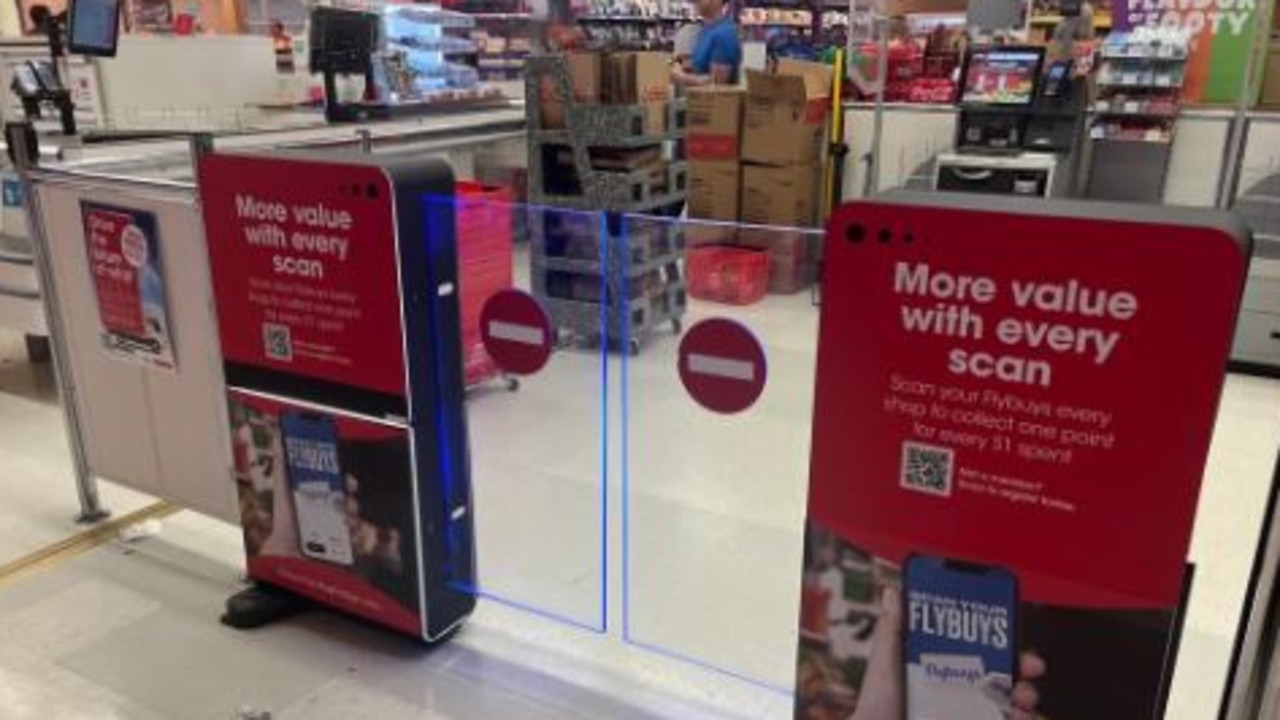‘Went crazy’: Coles’ infuriating check-out move as supermarket giants reveal huge profits
The average supermarket checkout now has “better security than a Supermax prison” – and it’s helping profits soar in a cost-of-living crisis.

ANALYSIS
Coles and Woolies are raking in big profits and raising their margins as the cost-of-living crisis enters its fourth year.
The big two supermarkets reported their financial results to the stock market this week, and both showed just how enormous they are in the Australian landscape.
Woolworths’ Australian supermarkets reported $50 billion in sales. That’s a big proportion of the country’s $2.4 trillion economy, about 2.1 per cent.
Coles reported $44 billion in revenue, about 1.8 per cent of the economy.
Both supermarkets turned a profit. In Woolworths’ case, it made $3.1 billion in earnings before tax and other accounting issues, and in Coles’ case, $2 billion.

Profits are important in the long term. Without them, a business stops existing. But in a competitive market you might sometimes see a business make a loss for a year or two when input prices go up. That happens in car making, for example. The business chooses to absorb a price rise in order to keep prices low for customers and not lose market share. It’s tough for the business, but they are forced to do it.
But despite the soaring prices of the goods they sell, rents and wages, the supermarkets have been able to keep profits nice and solid throughout the last four years.
Woolworths’ gross margins rose (gross margins are the mark-up on the actual good they sell). And its margins after accounting for the cost of doing business (wages, electricity etc) also rose.
Its stock prices have rewarded the stability. The next chart shows the stock price of Coles Group and Woolworths Group, which have both been stable in recent years and risen in the last six months. Of course, both those companies own businesses beyond just the supermarkets – for example, Woolworths Group owns Big W and Coles Group owns Liquorland.

The ‘cozzie livs’ crisis
The rising cost of everything has been the biggest problem in Australia in the last three years. So I’m always keen to have a peep at the margins of the supermarkets when they report their finances to investors. Margin tells us the difference between what something costs them to sell, and what they charge us to buy it.
Once again, last year, margins were rising. The earnings before interest and taxes (EBIT) margins of Woolworths’ Australian supermarkets increased from 6.0 per cent to 6.1 per cent. Coles increased from 4.8 to 5.2 per cent.
These profit margins are not the mark-ups on the goods. They are what’s left after taking into account the cost of doing business: rents, wages, electricity, etc. The actual mark-ups on goods went up even more, but a higher cost of doing business ate into that gap.
Supermarket margins are not high compared to the margins of a retailer like JB Hi-Fi (7.4 per cent). But because of the incredible sums we all spend at the supermarket week in, week out, they permit the supermarkets to make very big profits. Even a small increase in margins can add significantly to profits.

The rise in margins at Coles is particularly interesting to look at because it doesn’t come from the usual game of just whacking up prices. Instead, it has to do with what they call “loss”. Coles found a lot of items were disappearing from its supermarkets before anyone had a chance to pay for them. When your gross profit margin is 30 per cent, loss is pretty damaging to your margins. You need to sell three items to make up for the one that went missing.
Loss technically includes breakages in the aisles and theft by staff. But the recent rise in loss phenomenon has to do with the rise of self check-outs. They save on wages, but they encourage people to help themselves to certain items. So Coles made some changes.
The average Coles checkout now has better security than a Supermax prison, with multiple cameras pointing at it, AI tracking and electronic gates that stay firmly closed unless very specific conditions are met. But they also work as intended, stopping goods from strolling out the door unpaid for.

“A lot of the loss initiatives … have improved availability in the store. So when customers go to buy products that they may have struggled to find on our shelves because of loss issues 12 months ago, we now have on the shelves for them to buy,” said new Coles boss Leah Weckert.
After installing all this, Coles found “loss” decreased and that permitted margins to rise. To me, it seems a shame the rise in margins isn’t being shared with those of us who did the right thing all along – those whose conscience doesn’t permit five-finger discounts. They could have invested that saving in lower prices, not higher margins. But shareholders are pleased.
And what about Woolies? The rise in margins at Woolies is a bit simpler. They got a bit more tactical about what things they put on special and made more money.
But Woolworths Group needs to wring as much profit as it can from its successful supermarkets, because its department store is in a desperate struggle. Big W made just $14 million in profit last year, a 90 per cent decrease from the year before.
The trials of Big W go to show just how a competitive market can look. Playing against Kmart and Amazon is hard, and some years it is hard to make money. That’s how business should be.
It goes to show that the grocery business in Australia is a comfortable one for a company to be involved in.
Jason Murphy is an economist | @jasemurphy. He is the author of the book Incentivology






